
Safari in April
April
is the most challenging month,
but there is a handful of great options

the height of spring
April is the second month of spring and is generally considered to be a good time to visit Bhutan.
Mar-May is spring in Bhutan, transitioning from the cool dry winter to the warm wet summer, with temperatures rising and rainfall increasing through the period, in advance of the main monsoon.
During this period the typical daytime temperatures rise through 16-22C (61-72F), whilst nighttime low temperatures rise through 4-13C (39-55F). Rainfall increases through 25-125mm (1-5”) per month. Sunshine is up at 8 hours per day, which is around 65% of daylight hours, making for lots of pleasant sunny weather and often clear skies for mountain views.
Although the weather should be generally good, there can occasionally be serious showers and periods of persistent drizzle. The surrounding mountain peaks remain resplendent in their full covering of winter snow.
This period experiences a blooming of flowers across the hillsides and hedgerows, as well as some wonderful colour amongst the rhododendron forests. However, with dust rising from the plains of India, the visibility can reduce slightly and mountain panoramas can become less crisp for photography.
Spring is generally considered to be one of the best times to be in Bhutan, especially if you are planning to undertake trekking, mountain-biking and camping trips up into the mountains.
April is a good month for religious and cultural festivals. We often plan trips to coincide with a particular event.
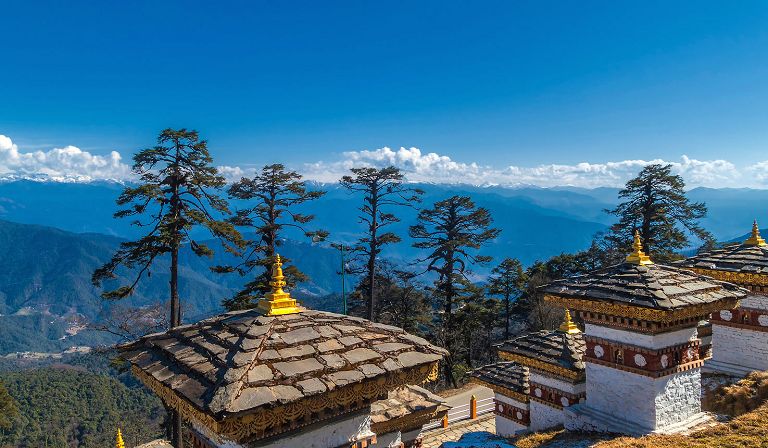
improving conditions in all areas
The Apr-May period is the early dry season in Namibia, a period that marks a transition from the preceding summer green season and the subsequent winter dry season, with savanna safari conditions generally improving as the weeks pass.
The weather throughout this period should be warm and sunny. The concerns are more about the residual effects on the landscapes of rain during the previous period.
In years where the rains are substantial, the landscapes can remain green and the seasonal waterholes out in the surrounding hinterlands can remain active. These effects would delay the migration of animals in towards the permanent waterholes of the Etosha area and the river valleys of Damaraland North and Twyfelfontein, greatly reducing the intensity of the wildlife viewing.
In drier years these effects will have subsided by this time and wildlife viewing will already be approaching the heights of the main dry season to follow.
During April, these factors are more likely to be stronger.
Temperatures in Etosha during the day average around 28C/82F at this time of year, dropping at night to around 14C/57F and possibly sinking even lower into May as the dry winter conditions start to take hold, especially in the western deserts.
Visitor traffic tends to be relatively light at this time, although can peak over Easter, when traffic avoidance techniques (like staying on private reserves and visiting more remote areas) should be deployed.
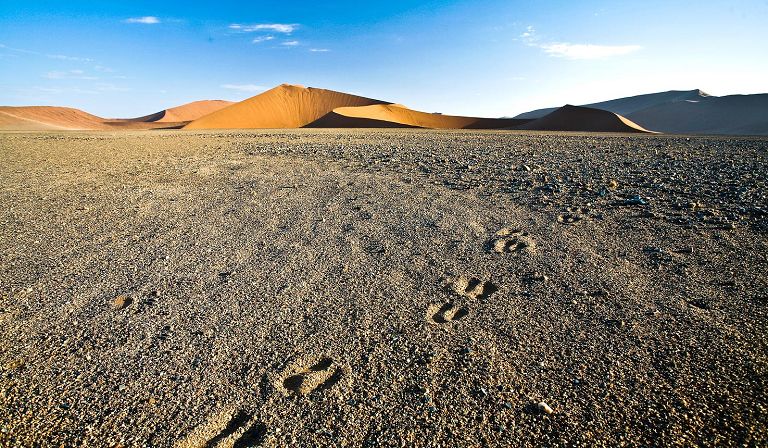
lovely temperatures and quiet camps
April is the first month of the transition from the warm green season to the cool dry season.
By now, the landscapes should be starting to dry out significantly, with the grasses starting to yellow and drop and the wildlife starting to move back in towards permanent water, making for improved wildlife viewing.
Although sightings may not be quite up to the level of the upcoming dry season, there should be plenty to keep you occupied.
Two huge advantages in April are the usually perfect mid-range temperatures and the fact that most lodges are quite empty, often leading to a more intimate and special safari experience.
Unfortunately, the prices in most lodges are closer to the dry season peaks than the green season lows.
The Cape (Cape Town, Whale Coast, Cape Winelands) has a converse seasonality to the rest of sub-Saharan Africa. It is late summer at this time, making it the perfect complement to a Botswana safari.
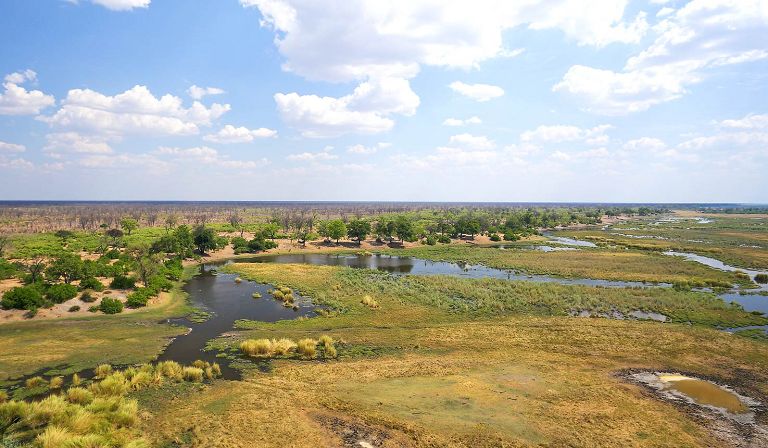
warm and calm conditions
April is generally considered to be a very good month to visit Galapagos.
Temperatures are up at 30C (86F). Rainfall drops to 25mm (1”) over the month, but occurs almost exclusively at higher altitudes.
Ocean temperatures should be very pleasant for swimming and snorkelling.
Wildlife events include courtship-dancing of waved albatrosses on Española, the end of the hatching season for giant tortoises, the start of the hatching season for green turtles and hatching season for land iguanas starting on Isla Isabela.
Visitor traffic is heavily controlled in Galapagos, so we only need to take care to avoid any traffic in the main port areas.
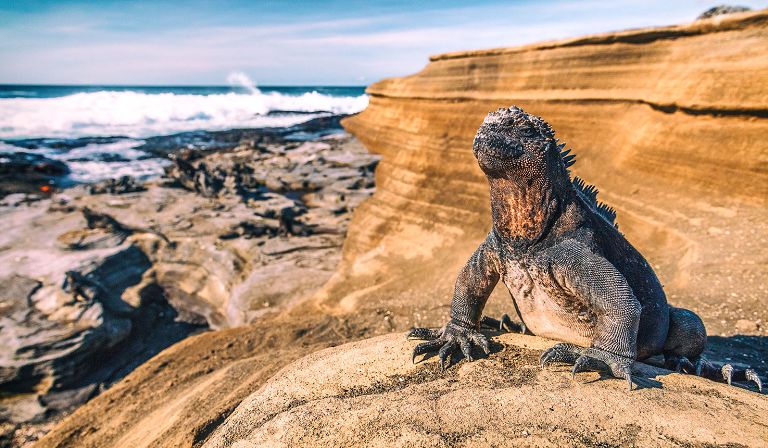
decent in the Cape, still rainy on safari
April is a good time of year in South Africa if you are looking for a compromise in weather conditions between the safari areas and the Cape, leaning more towards the latter.
The Cape (Cape Town, Whale Coast, Cape Winelands) is in fall at this time, with generally pleasant conditions, but with a chance of showers.
The safari areas of South Africa (Kruger, Madikwe, Tswalu, Waterberg) are in the latter part of their hot rainy season, which remains less than ideal, but could be okay if this is a less important part of your trip.
If you want to travel in April and safari is important to you, then it might be worth heading to the Tswalu area in the north, or exploring options in Botswana in particular, which is starting to get really good.
Visitor traffic in April can be relatively low in the safari areas, whilst the Cape areas are starting to get quieter (unless Easter is late).
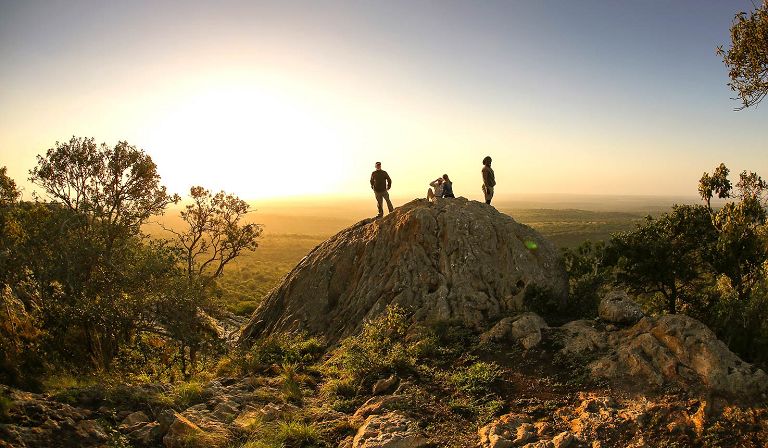
last call for Patagonia
April is the late fall and is generally considered to be a relatively unpredictable month for visiting Argentina, especially in areas further south.
Down in the south, the conditions in Patagonia are definitely on the turn. Although the weather here is always unpredictable, conditions are deteriorating for outdoor activities like touring, motorboating, kayaking, hiking, horse-riding and puma tracking. Temperatures are dropping to around 14C (57F), with rainfall increasing to 25mm (1”) for the month turning to snow at altitude.
In central areas such as Bariloche, conditions are also much less reliable for outdoor activities like touring, hiking, kayaking and motorboating. Temperatures drop sharply to around 15C (59F) and rainfall increases slightly to 50mm (2”) for the month.
Out on the coast, Península Valdés is also becoming more harsh at this time, but still with some migratory marine animals around. April is the second and final month of the second orca hunting season, when they target baby sea lions. Temperatures drop to around 15C (59F), but rainfall remains down at 25mm (1”) for the month.
In the northwest of the country, private-guided overland expeditions into the high Andes are excellent at this time. Temperatures in Salta are dropping slightly to 24C (74F), but rainfall has plummeted to 25mm (1”) for the month. Conditions in the dramatic high altitude areas are starting to get refreshingly cool.
Up in the north of the country, the Iguazú Falls area is slightly less hot and rainy. The water volumes on the falls should be starting to subside a little, but there may still be issues with heavy spray and closed trails. Temperatures are down a little to around 28C (82F) and rainfall also falls slightly to 150mm (6”) for the month.
Visitor traffic in April is much lower in Patagonia, with some of the more remote lodges starting to close for the end of the season.
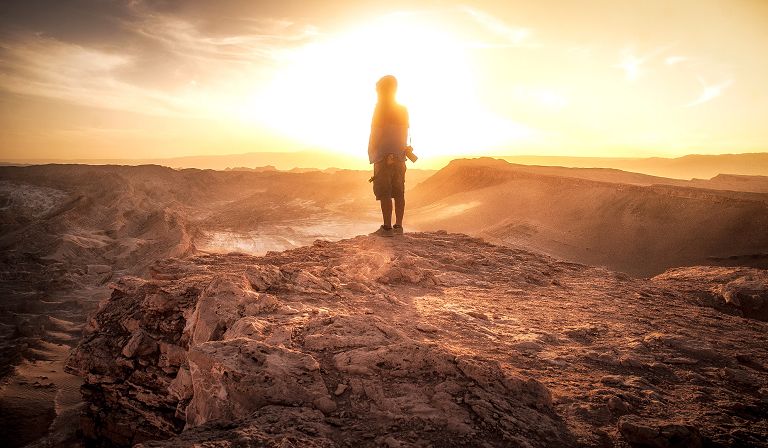
potentially very rainy, but blissfully quiet
April is generally considered to be a very challenging time to visit Tanzania.
The weather during April is usually significantly adverse. This month represents the peak of the main rainy season. Heavy and persistent precipitation can be expected in most parts. Nevertheless daytime temperatures should still continue to reach 25-30C/77-86F in most areas.
Safari in Tanzania in April is generally quite challenging. The heavy rain should now have completely dispersed the animals in almost all areas. Many camps close during this period, with the parks to the south and west becoming virtually cut off by the suspension of air services.
The only areas which remain easily accessible for safari are in the north, namely Lake Manyara, the Ngorongoro Crater and core parts of Serengeti. These are the areas which at other times of year suffer from the highest traffic, but which at this time of year should be reasonably quiet. The wildebeest rut in Southwest Serengeti is a particular highlight, with vast columns of animals moving slowly northwards through the Moru Kopjes area.
Conditions on Mount Kilimanjaro are difficult and dangerous and we only tend to outfit expeditions for hardcore mountaineers and military personnel.
Visitor traffic in April is extremely low and traffic avoidance is not a major issue. Some more experienced safari visitors, who understand that out in the bush rain is a blessing rather than a curse, take the opportunity to visit the Serengeti area in particular and enjoy the luxury of having the place virtually to themselves.
Although conventional wisdom dictates that this is not the best time to travel and we rate it relatively low accordingly, we often find ourselves recommending it very strongly to more experienced safari travellers.
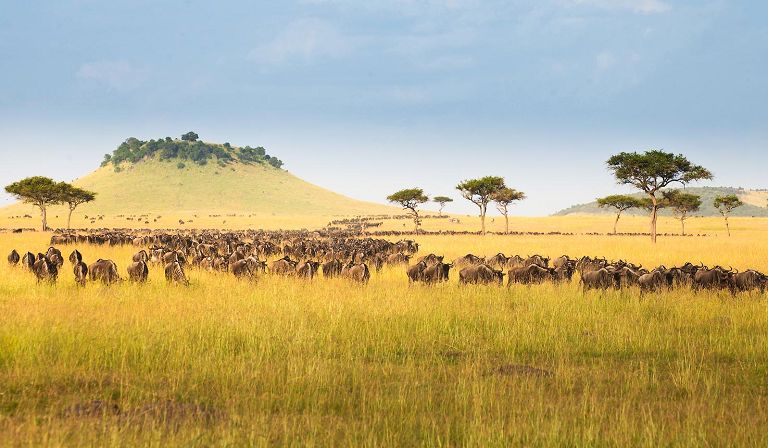
Extraordinary tailor-made adventures,
from earthy and edgy to easy and extravagant
From around USD 2500 per person, you set the ceiling

Get started on your trip
It’s never too soon to get in touch, we are here to help with every stage of your planning.

January
is strongest in north and central Africa, Asia,
the south of South America and Antarctica

February
is strongest in north and central Africa, Asia,
the south of South America and Antarctica

March
is strongest in north and central Africa, Asia,
the south of South America and Antarctica

April
is strongest in north and central Africa, Asia,
the south of South America and Antarctica

May
is strongest in north and central Africa, Asia,
the south of South America and Antarctica

June
is strongest in north and central Africa, Asia,
the south of South America and Antarctica

July
is strongest in north and central Africa, Asia,
the south of South America and Antarctica

August
is strongest in north and central Africa, Asia,
the south of South America and Antarctica

September
is strongest in north and central Africa, Asia,
the south of South America and Antarctica

October
is strongest in north and central Africa, Asia,
the south of South America and Antarctica

November
is strongest in north and central Africa, Asia,
the south of South America and Antarctica

December
is strongest in north and central Africa, Asia,
the south of South America and Antarctica
